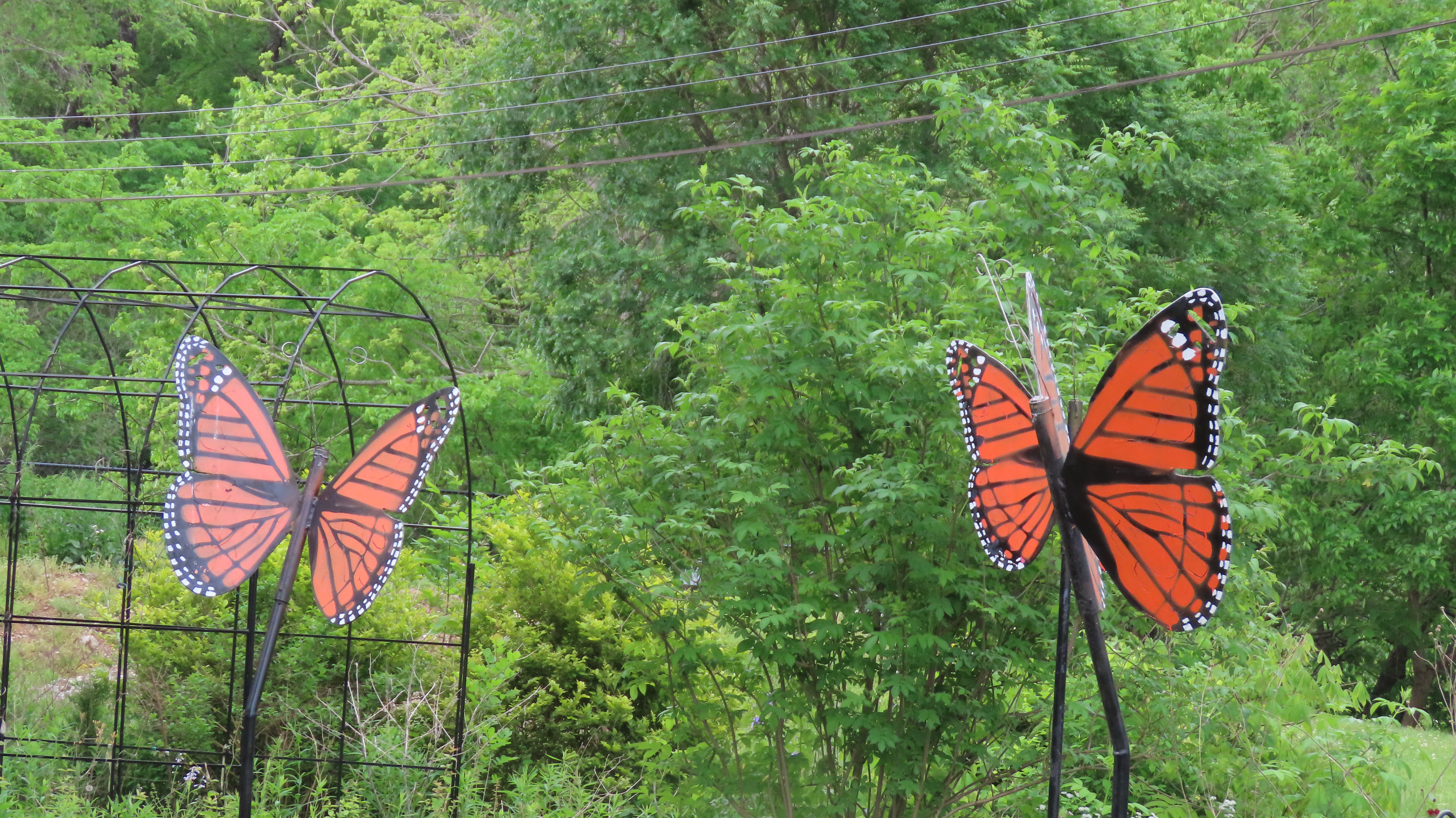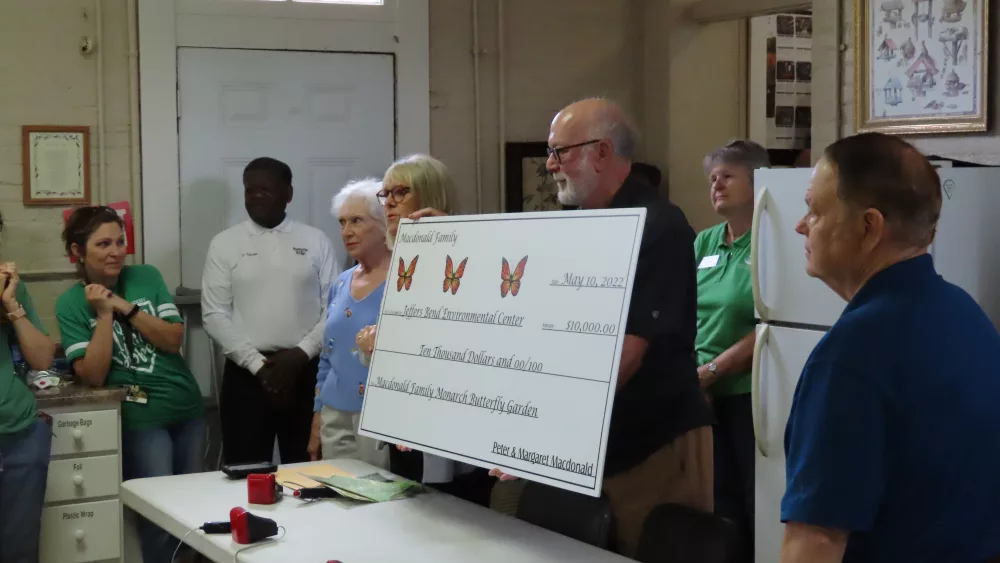
The endangered Monarch butterfly uses the Jeffers Bend Environmental Center as a stop during its migration from the northeastern United States to Mexico. Thanks to a generous donation made Tuesday, that stop will now help future migrations.
Peter and Margaret MacDonald along with their sons and wives made a $10,000 donation to the Jeffers Bend butterfly garden during a ceremony at the Metcalfe Lane facility.
Margaret said she became inspired to help the local butterfly garden following a family trip to Florida.
click to download audioAs many as 500,000 Monarch butterflies begin their migration south in September and October, mostly traveling to overwintering sites in central Mexico. They begin their return trip north in March.
MacDonald says the migration path comes across western Kentucky and Hopkinsville.
click to download audioNo single butterfly completes the entire migration round trip. Females lay eggs for the next generation during the northward migration.
The Jeffers Bend butterfly garden was established in 2006. Soon after, it was made an official Monarch Way Station and a pollinator-friendly site.
A 2015 U.S. Fish and Wildlife Service study showed that nearly a billion monarchs had vanished from the butterfly’s overwintering sites since 1990. They said the decline is in part due to a loss of milkweed caused by herbicides. The milkweed plant provides all the nourishment the monarch needs to transform the Monarch caterpillar into the adult butterfly.
Tuesday’s check presentation was made in the presence of over 100 students from University Heights Academy and Saints Peter and Paul School. MacDonald encouraged the students to be inspired by the Monarch butterfly in the same way she was.
click to download audioThe donation is part of Water Week in the Pennyrile that culminates with Saturday’s Water Festival at Jeffers bend which will feature over 25 water-related activities.
Jeffers Bend consists of 40 acres of grassland, a one-acre lake, nearly three miles of walking trails, and six educational buildings on the property that once housed the Hopkinsville Water Treatment Plant.
CLICK HERE TO SEE VIDEO OF TUESDAY’S PRESENTATION







